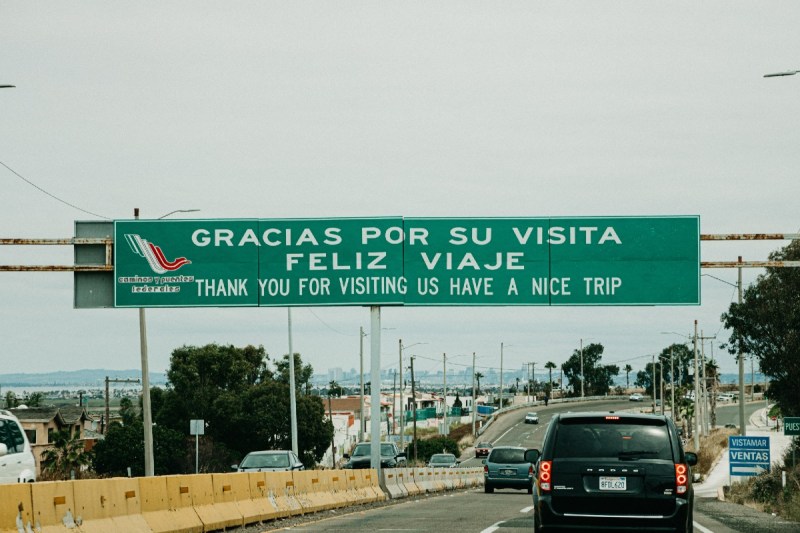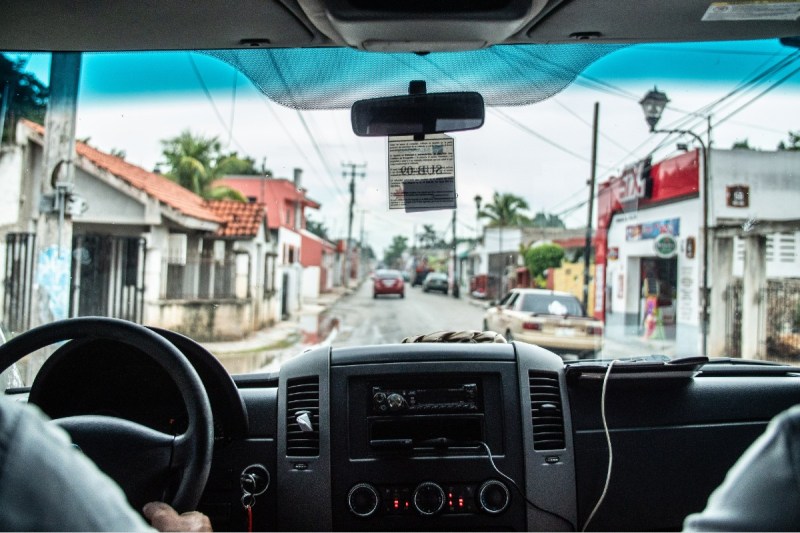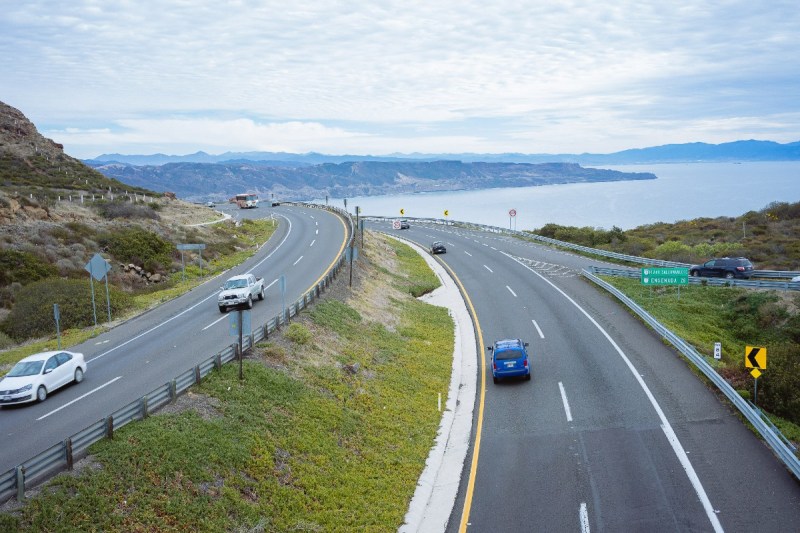Delicious food. Gorgeous weather. Friendly people. Vibrant culture. And did I mention the food? For all of these reasons and many, many more, Mexico has plenty to offer those who visit. With its distinct regions, it provides a wealth of diverse cultural and natural experiences. The best way to see it all is via car and the open road, but there are a few things you should keep in mind on your first Mexico road trip.
Having spent some five years living all over Mexico, over the course of which I’ve road tripped through it from top to bottom and end to end, I’m well versed in the intricacies of traveling it via coche. It’s an experience that isn’t without its challenges, but it comes with many rewards, as long as you follow these tips to prepare first. Take a look at our best Mexico road trip tips.

Get Your TVIP If You Need It
You can skip this step if you’ll be renting a car in Mexico. If you’re driving over the border on your own, however, and you’re planning on leaving the Mexico Free Zone that extends about 15 miles from the border and encompasses all of Baja and Quintana Roo and much of Sonora, you’re going to need a Temporary Vehicle Import Permit, or TVIP.
If you want to get it online, you need to apply between 10 and 60 days before your trip. First, get your FMM form, then get the TVIP at the Banjercito website. Keep in mind that you will have to get these documents stamped at the Free Zone checkpoint.
You can also take care of this upon arrival. Once you reach the checkpoint, head inside and follow these steps. First, get your FMM from the immigration window. Next, make copies of all the papers they give you (there is a copy station onsite). Finally, take these to the onsite Banjercito cashier and pay your deposit. This whole process usually only takes 20 to 30 minutes.
The deposit depends on the age of your vehicle, spanning anywhere from $50 to $400. But don’t worry — this will be returned when you leave. Simply pull up to the kiosk when you re-enter the Free Zone, where the workers will scan your permit. The money will be refunded within 24 hours.
You’re also going to need proof of Mexico auto insurance for the duration of your visit. Most American plans can set you up with this automatically online.
This next step is crucial: Keep all permits, proof(s) of insurance, and registration handy! Depending on where you go, it is very likely that you will be stopped by the police, who will want to see them. If your papers aren’t in order, they might start hustling for a bribe.

Dealing With the Police
While much is made of the cartels, I personally have never encountered them, at least not knowingly. But the police — yes. Visitors tend to have run-ins with the police. The police are notoriously corrupt in Mexico, which in most cases means they’re out for bribes. It’s more likely in some places than others, but it is certainly not uncommon for police to stop obvious out-of-towners for no reason other than to drum up a bribe.
Usually, they’ll make it seem like there’s some nonsense problem with your paperwork, hoping that you’ll get the picture, and sometimes they’ll say something about “donations” for the local cops. If your paperwork is in order, don’t sweat it. Just be confident and persist in pointing out that your paperwork is all there. If they really push, you can ask to speak with their “jefe,” and that will usually be the end of it.
But let’s say you have made some minor infraction and the police are making a big show of it. You can easily circumvent the situation by offering to pay the “fine” then and there. This will usually involve the discreet (or sometimes blatant) exchange of a few hundred pesos.
Much of the time, however, you’re only stopping because the police have a checkpoint set up at the end of town. Sometimes they’re sniffing for bribes, but usually, they’re just keeping an eye on who is coming and going. In most cases, you’ll simply show your papers, they’ll ask where you’re coming from and where you’re going, and then you’ll be on your way.
Crime and Safety on the Road
A lot of people avoid road tripping through Mexico because they’re worried about crime. While crime certainly exists and you should keep your wits about you (particularly in major cities), most towns and villages are pretty safe for visitors.
That being said, there are regions where cartel violence is a real problem, to the point you probably shouldn’t go there at all. The deserts of the north and the states of Michoacan, Colima, Guerrero, Sinaloa, and Tamaulipas can all be pretty sketchy, as can parts of Durango and Zacatecas. I’ve driven through several of these states with no problems at all, but if you go, be sure to drive during the day.
Beyond that, your safety concerns shouldn’t be that different from any other place in the world. Be mindful of where you park, and avoid leaving expensive items in plain view in your vehicle.
Toll Roads
Sometimes it seems like you can’t drive ten meters without hitting another toll booth. They’re ubiquitous throughout the country.
You can usually avoid them by taking longer, lower quality “libre” routes, but the toll or “cuota” roads tend to be safer. It’s worth paying a few bucks for peace of mind.
Gas Stations
You’ll never pump your own gas in Mexico, and it’s the norm to tip the attendants five or ten pesos or so, as they are paid next to nothing in terms of hourly wages. Sometimes they’ll go the extra mile by cleaning your windshield and checking your tire pressure, so feel free to increase your tip accordingly.
Many locals will advise that you avoid paying for gas by card, as scams do happen on occasion. Pay with cash when possible.

Mechanics and Repairs
From my experience, dealing with mechanics in Mexico is great — way better than some experiences I’ve had in the U.S. If they aren’t busy, they’ll usually tackle the repairs on the spot. If the part is available in town, you can have the most basic repairs completed immediately. Keep in mind that your Mexico auto insurance plan will often cover the cost of shipping parts from abroad if necessary.
Best of all, prices tend to be almost absurdly low unless you need something major. On my last trip, I got a flat tire fixed in five minutes at 10 p.m. for about $5. I was living in one town for a while where my motorbike guy fixed pretty much anything for 50 pesos, or about $2.50.
Roadside Vendors
You’ll find various products and services being sold at virtually every stoplight and many gas stations, from food to souvenirs to car washes. It’s a great way to get some locally made snacks, water, or a shine-up for your car. It also helps the local economy more than buying a bag of Lays or something from a convenience store chain.
Rules of the Road
There are supposedly traffic laws in Mexico, but it’s often hard to discern them. Common sense seems to be the prevailing rule.
One thing that might surprise you on remote, two-lane highways — especially in the mountains — is the passing style. Slower vehicles pull halfway onto the shoulder while faster drivers bomb past them. Essentially, the center line becomes a passing lane for both directions of traffic. This can be… let’s call it exciting (rather than terrifying) when two cars coming from opposite directions attempt to pass at the same time.
Beyond all that, driving in Mexico isn’t all that different from any place else. Enjoy the scenery, stop often to eat tacos and take photos, and enjoy the ride.



